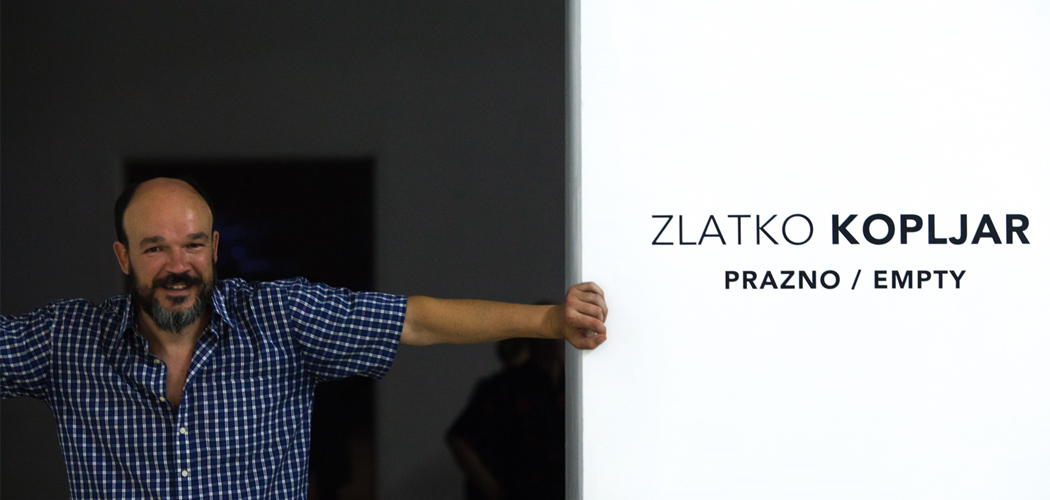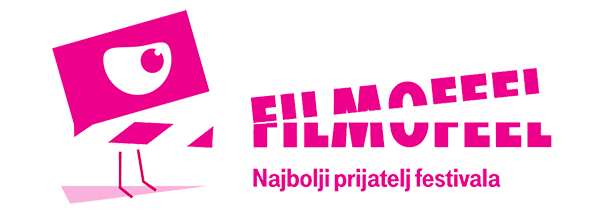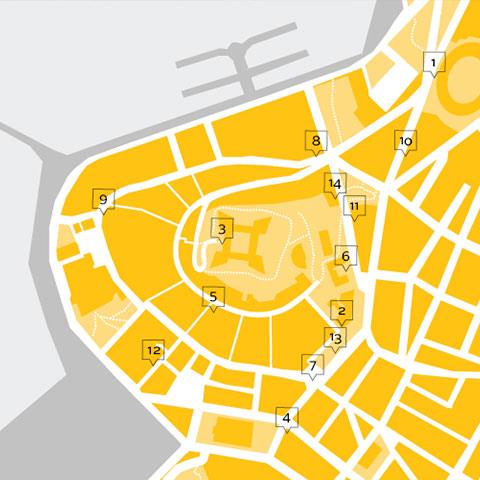
Empty, which is not empty
The last exhibition of this year’s Festival - Prazno / Empty by Zlatko Kopljar - was opened on Friday at the Museum of Contemporary Art of Istria, within the side programme of Pula Film Festival. Zlatko Kopljar is an artist best known for his performances where he knelt on a white handkerchief, dressed in a suit, in front of art and financial institutions of the world. The exhibition consists of video works and installations, and the atmosphere was similar to one of a sacral building, with restrained, somber music, and light accents on only four exhibited pieces.
Museum director Ketrin Milićević Mijošek welcomed the visitors, saying that Kopljar has previously collaborated with the Museum, but that this is his first solo exhibition. Kopljar has been present on the Croatian and international scene since the 1990s, speaking about relevant and significant topics.
The Museum director then gave the word to the curator, Mladen Lučić, who once again opened with a joke, telling the visitors they were lucky to be able to come to the exhibition, seeing how Kopljar is known for closing down museum entrances. Lučić hinted to a performance in which Kopljar placed a huge concrete block at the entrance to the Museum of Contemporary Art in Zagreb, bringing to attention the relationship towards the museum as an institution, and talking about the barriers between artist and institution. Given that he is also familiar with the situation in world institutions (for example, he exhibited at the São Paolo Biennial), Lučić added that Kopljar examines art and the position of the artist in society, the role of centres of power, corporations, market, and marketing in dictating the trends - reminding the visitors of the performances Kopljar has had kneeling in front of centres of power in Beijing and Washington - and saying that, even though his expression is minimalist, his work is very expressive in the message the author wants to send through his work.
Zlatko Kopljar thanked the Museum and the visitors for their attention, and explained that the title of the exhibition derives from the pieces themselves. He started with a video piece, K16, created in 2012, where he asked questions of what is going on, how people think, and how people live in Croatia, on the edge of Europe and Western thought. He regards K18 important, as it is with this piece that he came full circle, from creating to destroying the entity he himself created; in it he wonders whether the job of an artist is to say “goodbye” to art every day. K20 Empty - Empty MoMa NY and Empty Tate Modern as their scaled down versions, models - and K21 Random Empty - which consists of two cement blocks on pillar bases - deal with the relationship towards institutions. By touching upon the issue of the materiality of the work, Kopljar said the cement is just a shell, something that surrounds the work, while the content is actually inside, it is immaterial, such as, for example, the space between two people, and it is up to us to wonder what this content might be, what is inside, and what meaning we give it.
The director of the Museum of Contemporary Art of Istria congratulated the author on the exhibition, and his overall work, and has also thanked the Festival and its artistic director Zlatko Vidačković, who attended the opening, as well as the County of Istria, the City of Pula, and the Ministry of Culture for their support.






